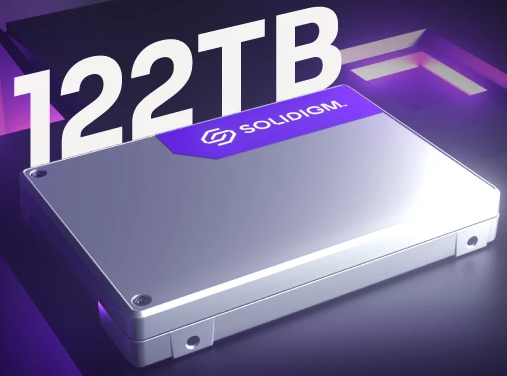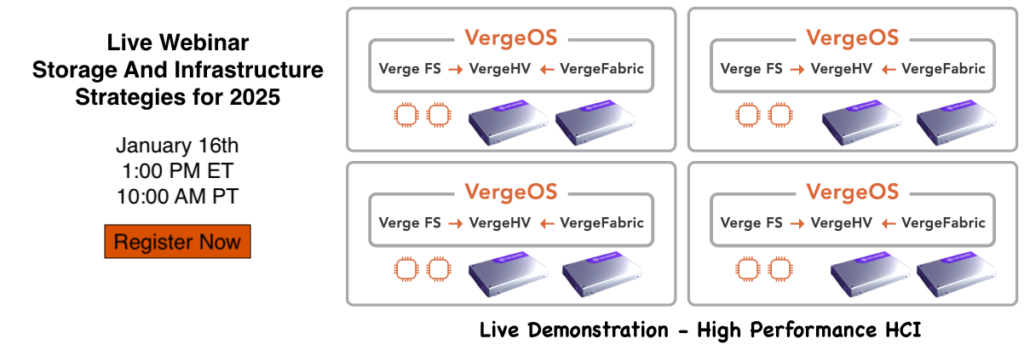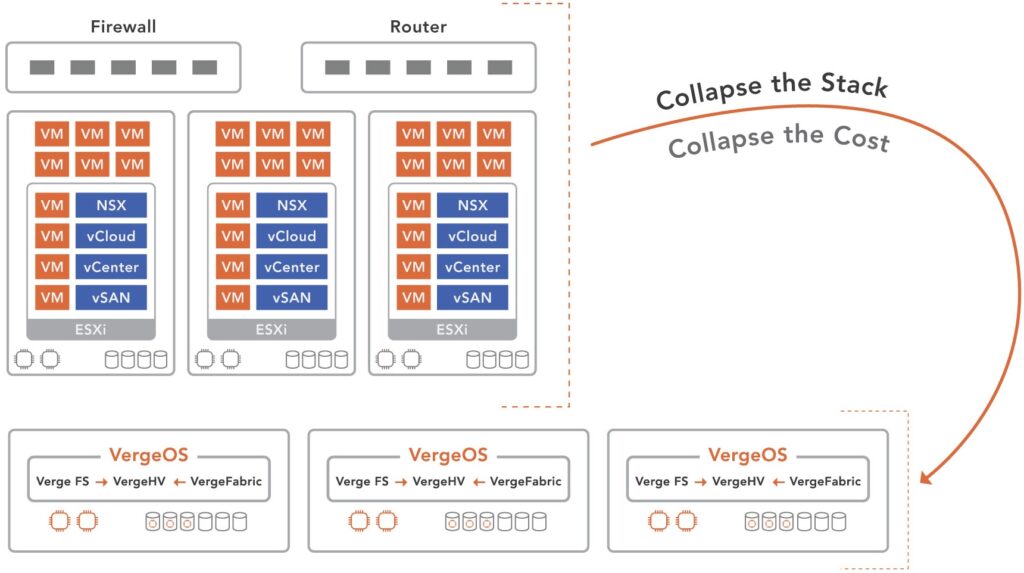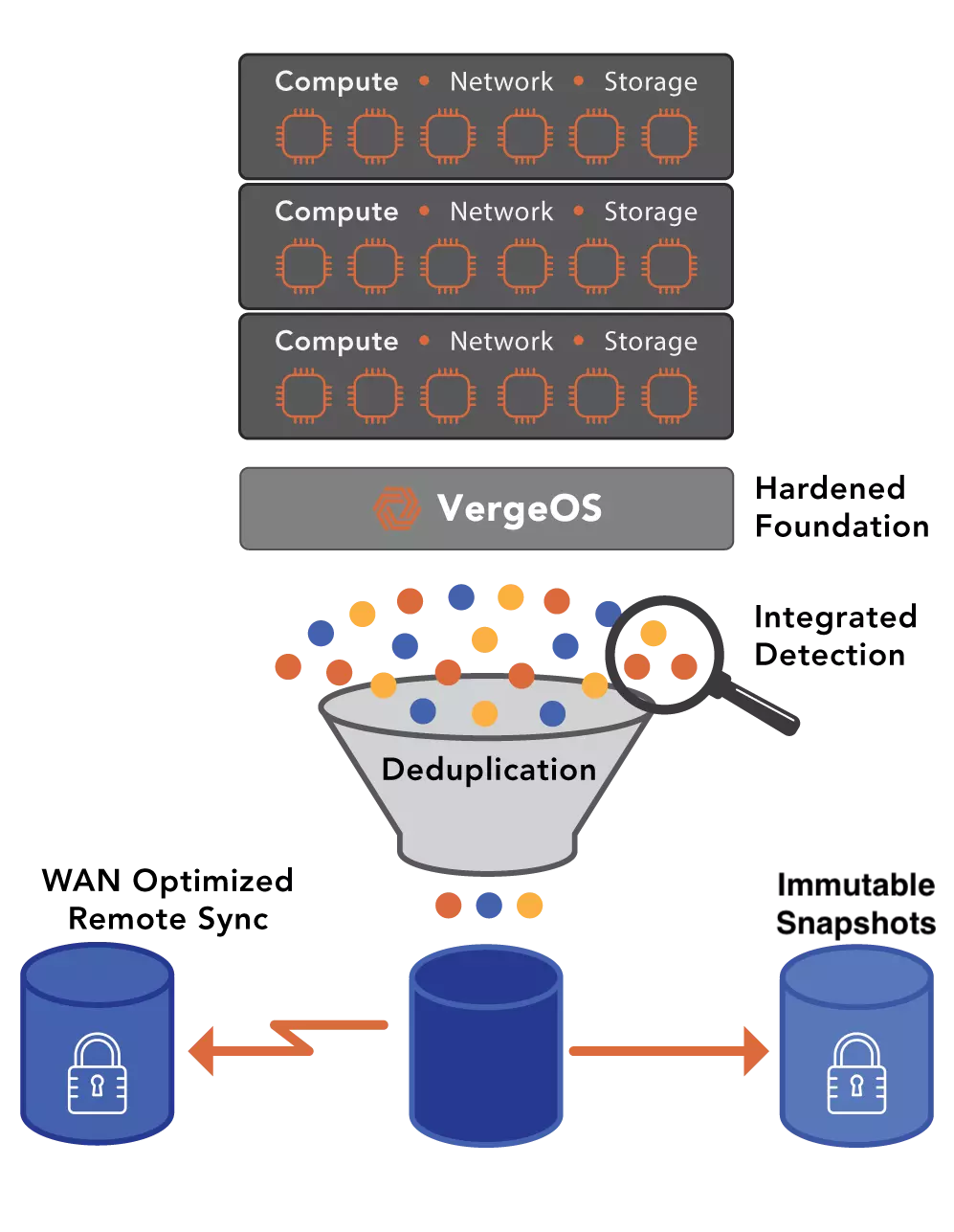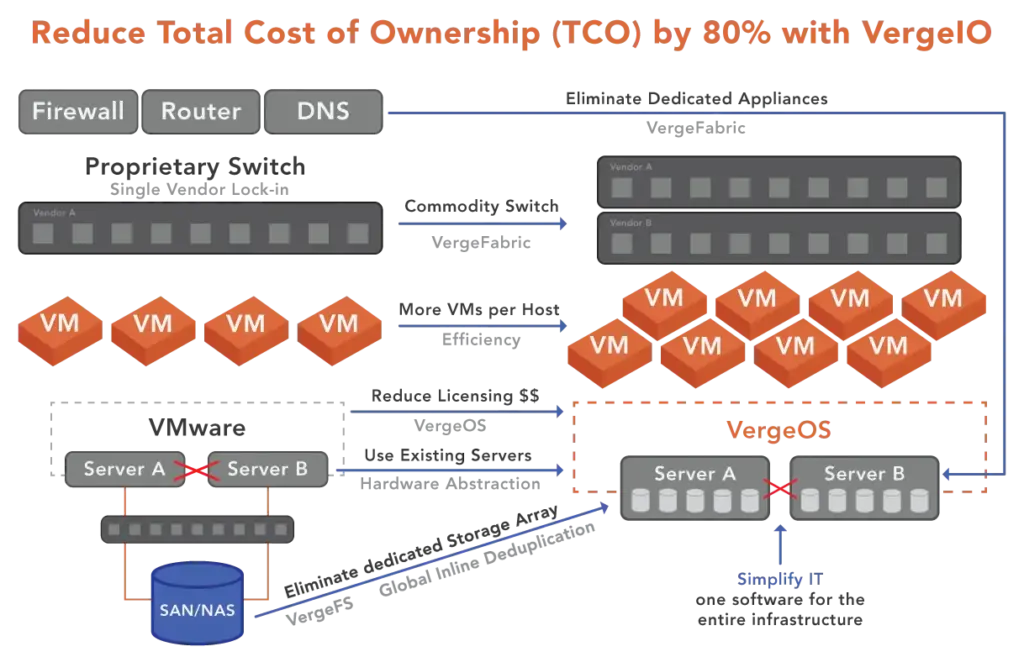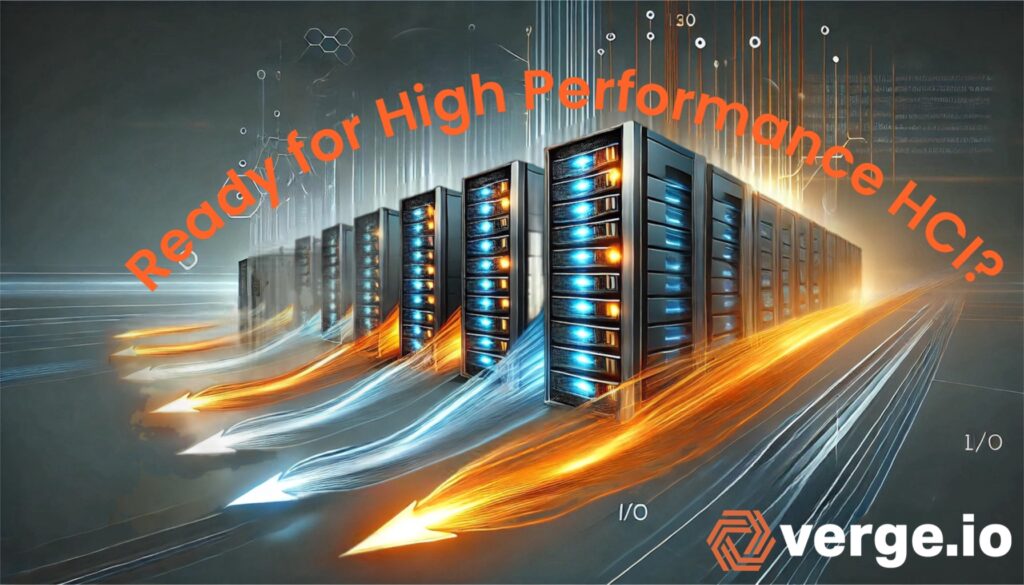UCI enables VMware exits by providing a flexible, efficient infrastructure that allows organizations to retain their existing servers, storage, and backup hardware while modernizing their IT environment. VergeIO’s ultraconverged infrastructure (UCI) platform, VergeOS, empowers businesses to make the transition efficiently while improving the performance and longevity of their current hardware investments.
How UCI Enables VMware Exits Without Hardware Refreshes
Various VMware alternatives consist of hyperconverged infrastructure (HCI) solutions. Due to strict hardware compatibility requirements and bundled hardware and software purchases, these designs force organizations to upgrade their servers and storage sooner than necessary. This often results in businesses undertaking expensive and unnecessary upgrades. Furthermore, HCI’s limitations—such as insufficient storage performance, inflexible scaling options, and the difficulty of a seamless transition from a three-tier to a converged architecture—often tether organizations to their outdated architectures.
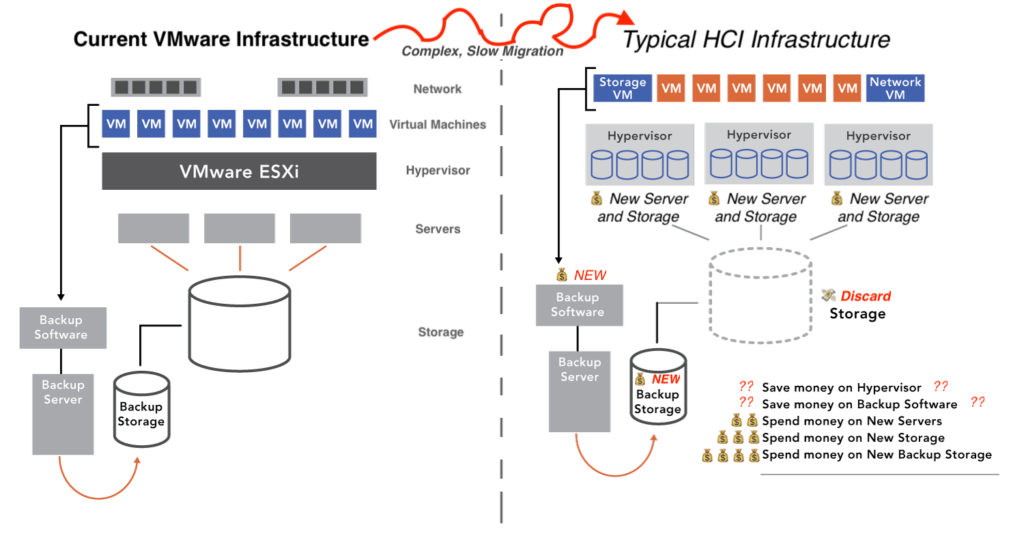
In contrast, UCI enables VMware exits by eliminating these constraints. VergeOS supports nearly any server hardware purchased in the last five years and allows for mixed-node configurations. Whether your data center includes blade servers, rack-mounted servers, or a mix of vendors, VergeOS adapts to your infrastructure. This flexibility means you can retain your existing hardware and maximize its service life while transitioning to a modernized architecture.
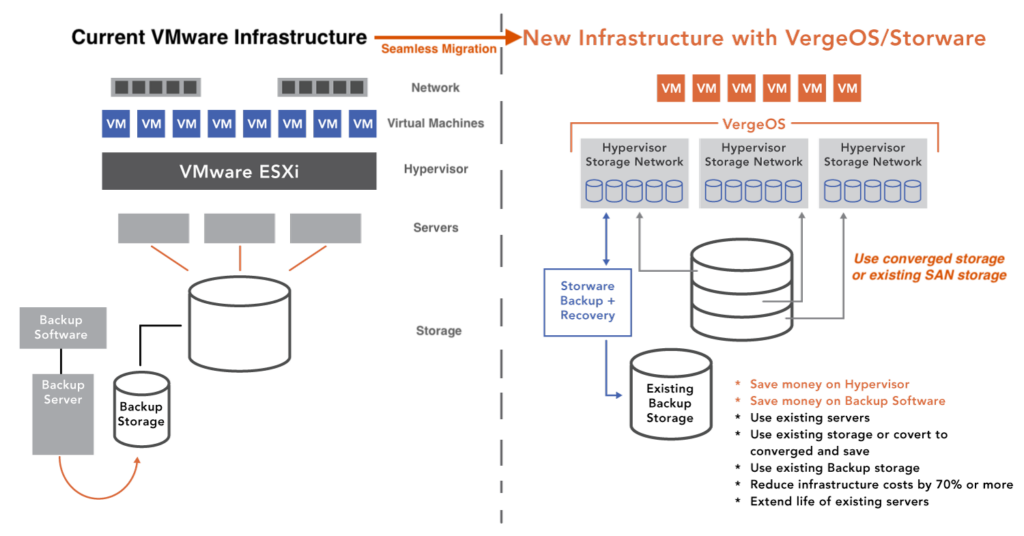
UCI Enables VMware Exits and Extends Hardware Lifecycle
A key advantage of VergeOS is that UCI enables VMware exits while enhancing the efficiency of existing hardware. VergeOS often improves the performance of aging servers and storage systems by optimizing resource utilization and streamlining operations, extending their lifecycle. This not only reduces immediate hardware costs but also delays future refreshes.
Additionally, VergeOS includes built-in data resiliency to protect against failures due to aging hardware. Its advanced data redundancy features ensure that even if a server fails, your data remains intact and your operations continue without interruption.
Advanced Storage Features with VergeOS
VergeOS provides a robust software-defined storage layer, VergeFS, which offers enterprise-class features that further demonstrate how UCI enables VMware exits without compromise:
- Global Inline Deduplication: Reduce storage usage and improve efficiency.
- Unchangeable, Unlimited Snapshots: Enhance data protection and recovery options.
- Tiered Storage and Live Migration: Automatically move data between storage tiers for optimal performance and cost management. VergeOS also allows live migration of virtual machines (VMs) between storage tiers and server nodes, ensuring maximum flexibility for evolving workloads.
With these capabilities, organizations can consolidate multiple storage systems into a unified solution and eliminate the complexity of managing disparate arrays.
Comprehensive Backup and Archive with Storware
Data protection is critical during any infrastructure transition, and VergeIO’s partnership with Storware ensures businesses can continue to safeguard their data effectively. Investing in backup infrastructure, especially backup storage, is significant, making maximizing its lifespan and utility essential. Storware Backup and Recovery integrates directly with VergeOS to provide:
- Long-Term Data Retention and Archive: Extends the storage of critical data in existing backup hardware or cloud-based object repositories.
- Efficient Backups with CBT: Use VergeOS’s changed block tracking (CBT) and snapshots to reduce backup times and storage requirements.
- Support for Existing Backup Hardware: Retain your investment in Rubrik, EMC Data Domain, Exagrid, or similar appliances, further maximizing ROI.

Together, VergeOS and Storware ensure a VMware exit that minimizes disruption, reduces costs, and secures long-term data retention.
See the VergeIO/Storware solution in action register for our webinar and demonstration: Exit VMware, Retain Server and Backup Hardware
How VergeIO and Storware Deliver Unparalleled Data Protection and Resilience
VergeIO and Storware work together to provide unmatched data protection, data resilience, and long-term data retention for organizations transitioning from VMware. VergeOS includes advanced high-availability features, robust drive failure protection, and unlimited snapshots to safeguard critical workloads. Additionally, VergeOS’s ioGuardian offers continuous monitoring and ensures rapid responses to potential issues, further enhancing operational stability. VergeOS enables infrastructure to become the first line of recovery often seamlessly maintaining operations through multiple simultaneous hardware failures.
Storware complements VergeOS by integrating with its snapshots and changed block tracking (CBT) capabilities, enabling highly efficient and reliable backups. Beyond backups, Storware excels in cataloging data for long-term archival purposes. It presents organizations with a searchable catalog that simplifies data retrieval and ensures compliance with regulatory requirements. Storware becomes the point of recovery for software failures or human mistakes. Together, VergeIO and Storware form a comprehensive solution that protects against hardware failures, ensures data integrity, and provides easy access to archived information.
UCI Enables VMware Exits While Future-Proofing IT
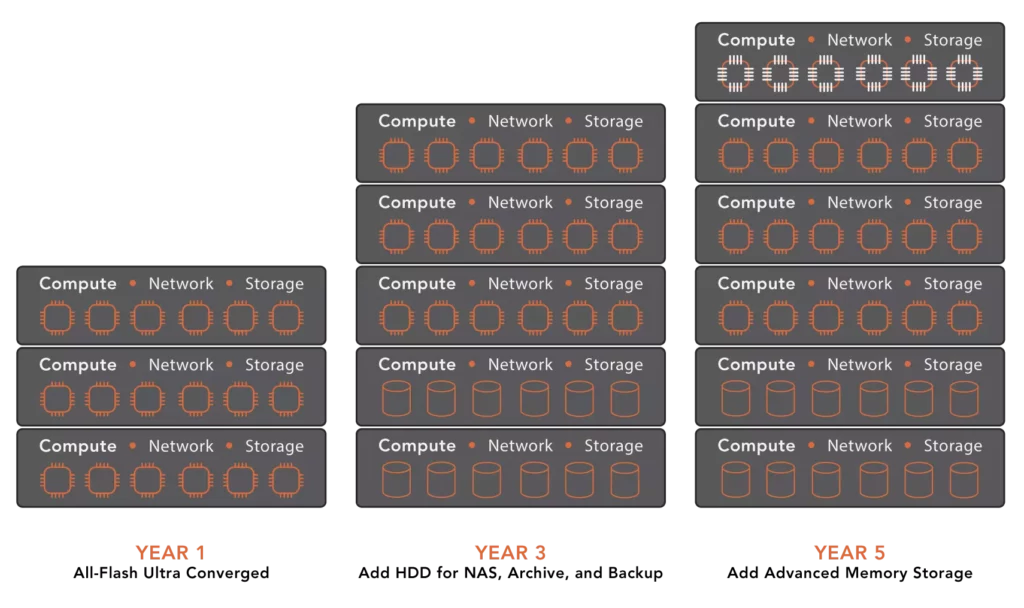
Unlike traditional HCI solutions, VergeIO’s UCI architecture doesn’t just solve today’s problems; it prepares your IT environment for future challenges. By improving the performance of current hardware, extending its lifecycle, and consolidating infrastructure, UCI enables VMware exits while empowering organizations to build an agile, cost-efficient data center.
VergeOS also protects your data with advanced resiliency features that guard against hardware failures, ensuring uninterrupted operations. Combined with Storware’s comprehensive backup and archival solutions, VergeIO provides a complete, no-compromise alternative to VMware.
Conclusion
UCI enables VMware exits by allowing organizations to retain their current hardware while modernizing their IT infrastructure. With VergeOS, businesses gain flexibility, enhanced hardware performance, and advanced storage capabilities. Paired with Storware’s robust data protection and long-term archival solutions, UCI represents a cost-effective, future-ready approach to IT transformation.
